This easy bao bun recipe takes a wonderfully simple yeasted dough, shapes it into half moons, and steams them to light and fluffy. Dip them in hoisin sauce and serve them with your favorite Chinese entree.
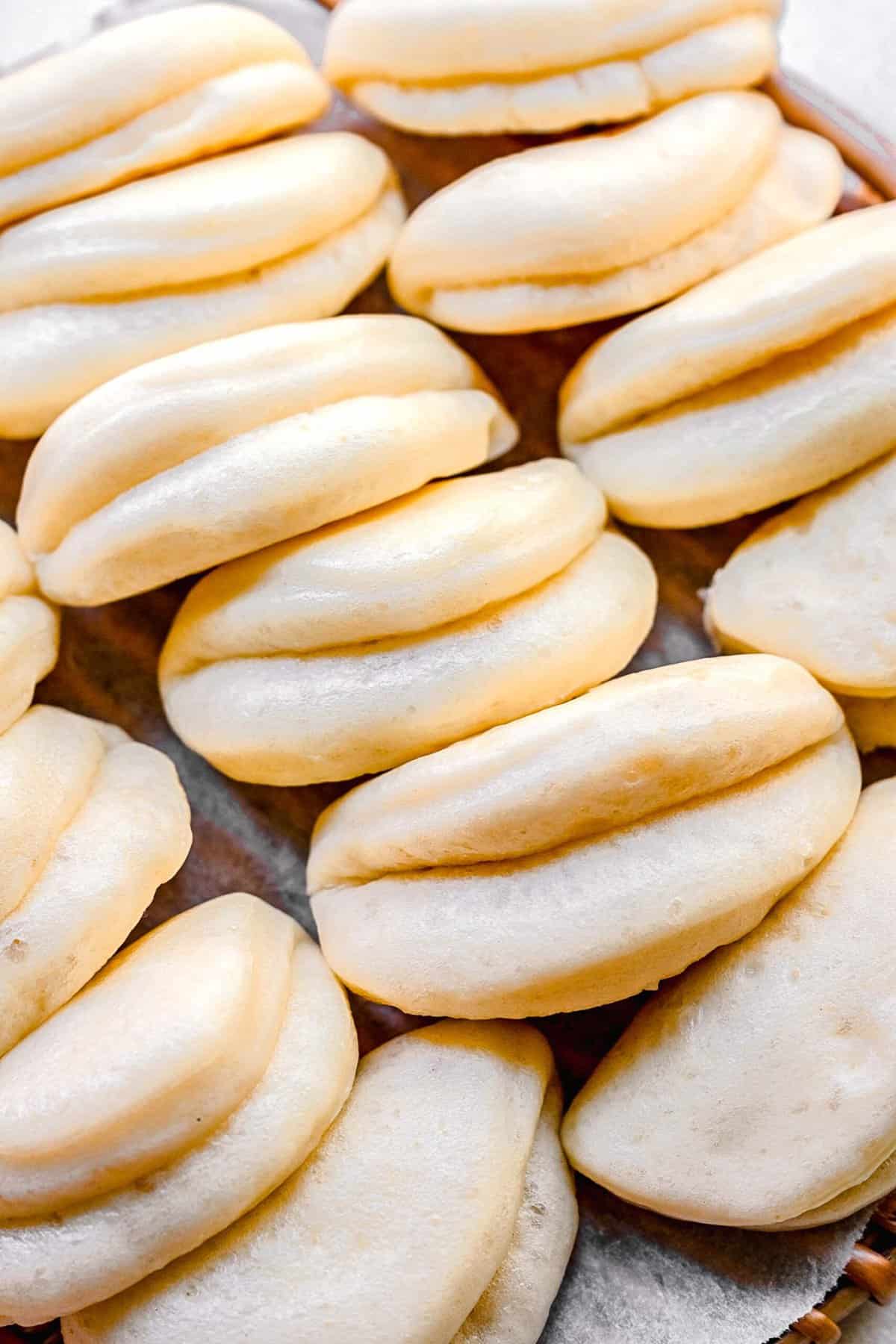
There’s nothing quite like sinking your teeth into one of these steamy, fluffy bao buns. Soft and almost cloudlike, this versatile Chinese yeasted “bread” is made from simple ingredients turned into something fantastic. They are very mild with a slight hint of sweetness and are served warm, often with a delicious dipping sauce or as a side dish to other Chinese classics. Their cute half-moon shape makes them even more charming.
Bao buns are one of my favorite things to get at Chinese restaurants. I love that you can make them in the comfort of your own home (for a fraction of the price). Don’t be intimidated by the yeasted dough. Just follow my lead and you’ll have these mastered in no time. 玩得开心 (“have fun”)!
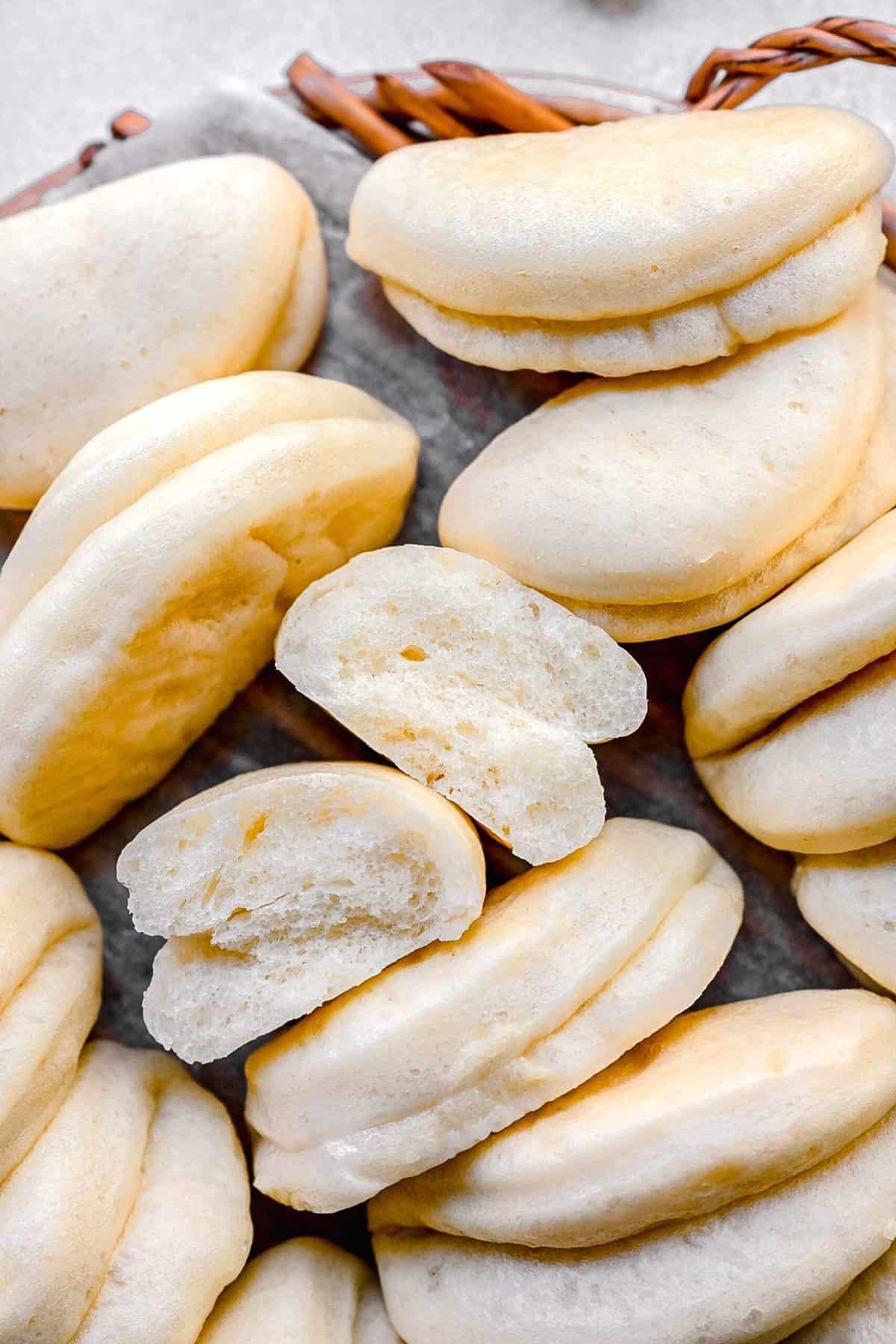
Why You’ll Love This Bao Buns Recipe
A simple yeasted dough recipe? Sign me up! Here are some of the top reasons I love this easy bao bun recipe.
- Surprisingly easy. Yeasted anything can be intimidating. This bao bun recipe is nothing to fret about, however. All it takes is a little mixing, kneading, and patience to make the dough. It’s perfect for any culinary skill level.
- Texture. I love how wonderfully soft and airy these buns are. They are so fluffy yet provide just the perfect amount of resistance as you bite into them. Go ahead. Try it. You’ll see what I mean.
- Versatile. These bao buns go with anything! Their neutral flavor makes them the perfect vessel for a variety of sauces and fillings and the ideal, everyday-yet-delicious side dish for pretty much any Chinese entree you can think of. Check out the section below titled “Ways to Serve Bao Buns” for inspiration.
What Are Bao Buns?
Bao buns are fluffy, airy buns made from a simple yeasted dough that has been formed into half-moon shapes and steamed. They are a common side dish served at Chinese restaurants. Bao buns are sometimes even stuffed with protein but I kept it simple this time for a great base recipe.
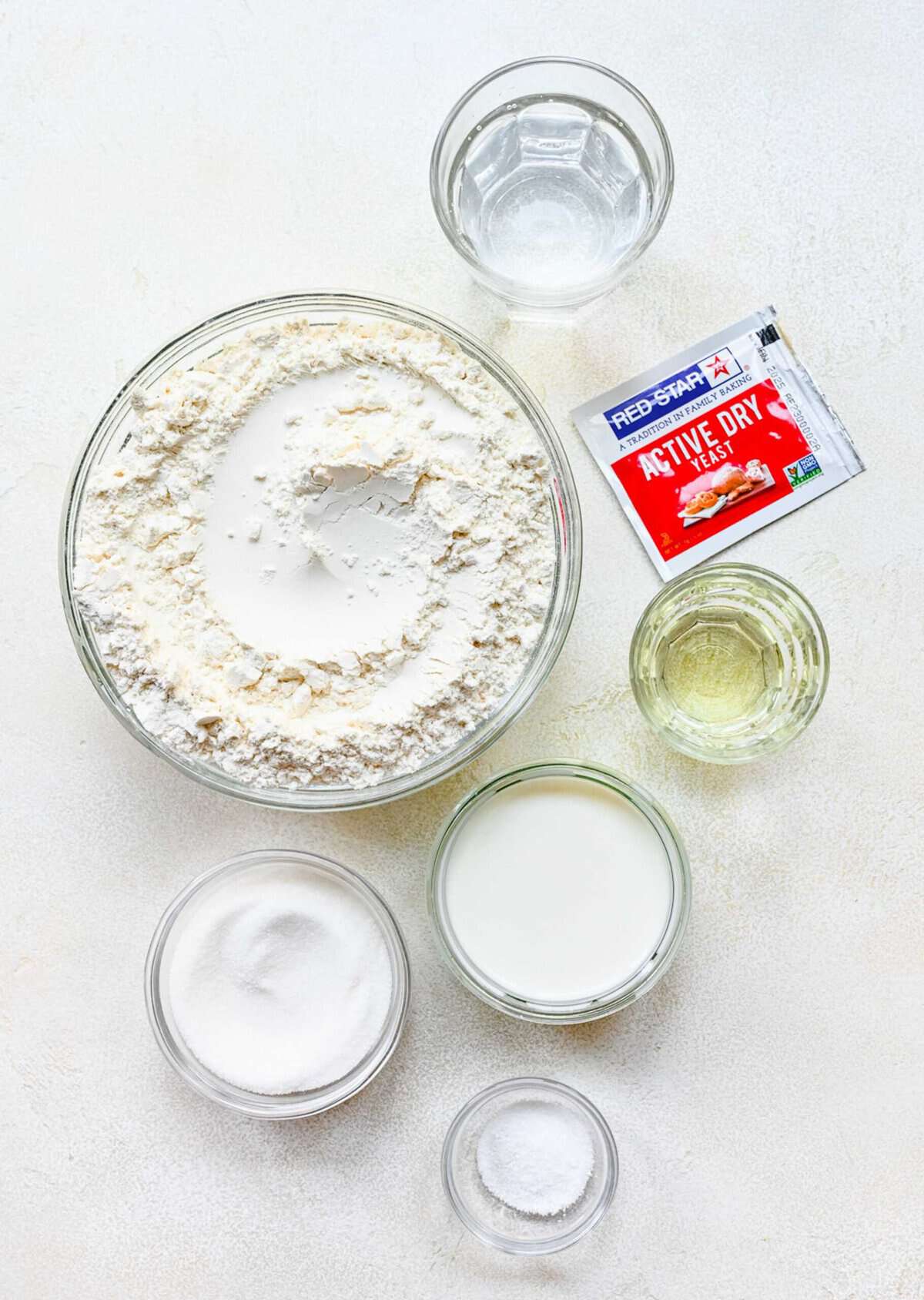
Recipe Ingredients
You won’t need much to complete this bao bun recipe and you might already have some (if not all) of the ingredients in your kitchen. Here’s a list for you. Be sure to scroll to the recipe card below for exact measurements.
- All-purpose flour – You could probably use a 1:1 gluten-free flour here instead. Just note that the texture might be a little different.
- Granulated sugar
- Active dry yeast – Be sure that your yeast is fresh. If using packets, check for the expiration date. If using jarred yeast, be sure that it’s been properly stored in the refrigerator (if opened). Also, check for the expiration date.
- Salt
- Water – The water needs to be heated to ~115˚F. Water that is too cold will not activate the yeast properly. Water that is too hot will kill the yeast.
- Whole milk – It should be heated to ~115˚F. If it’s too cold, it won’t activate the yeast. If it’s too hot, it will kill the yeast.
- Vegetable oil
How to Make Bao Buns
Here comes a general overview of how to make steamed bao buns. For more detailed instructions, scroll to the recipe card below.
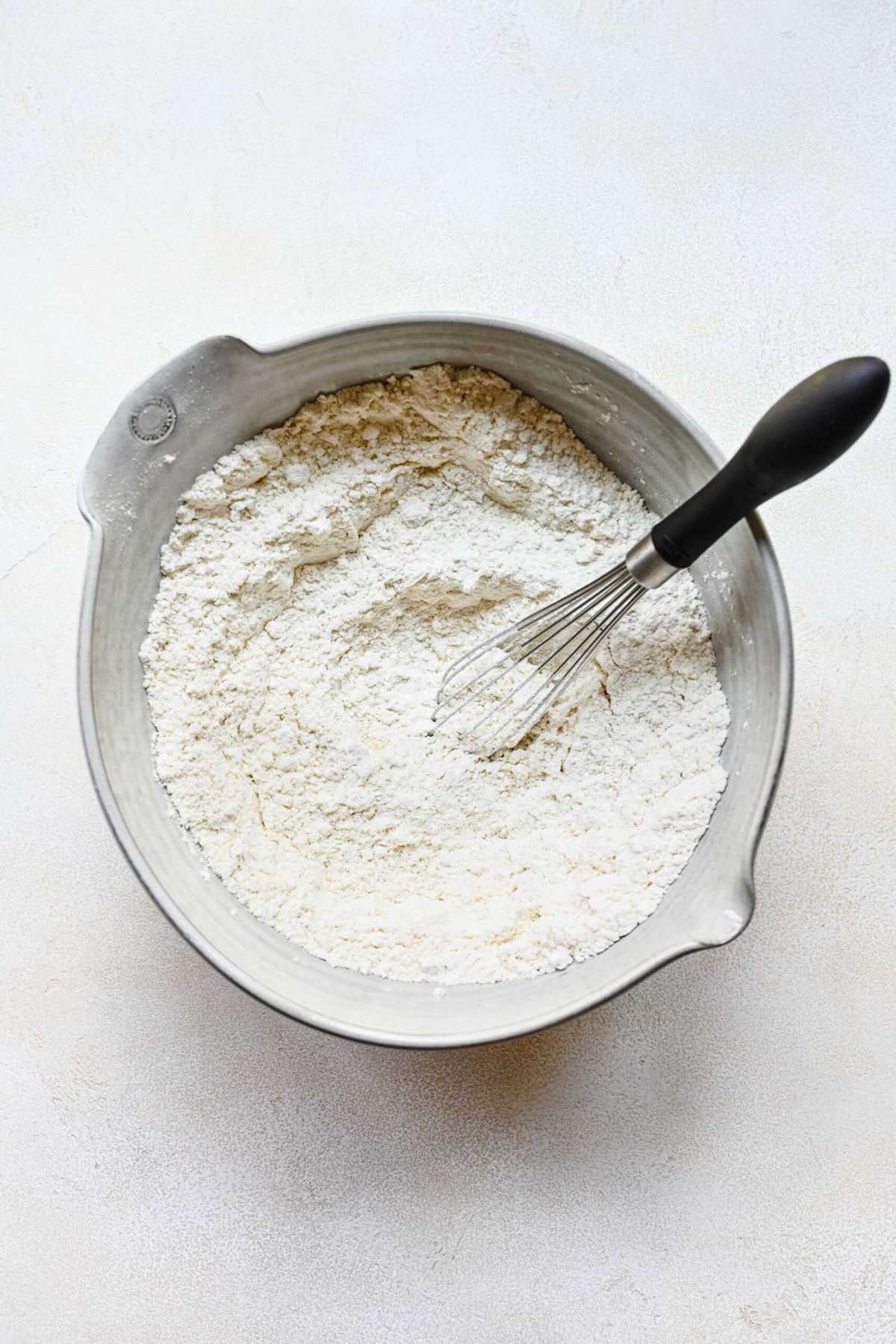

- Make the dough. Whisk together the flour, sugar, yeast, and salt. Make a well in the center of the dry ingredients and pour the warm water and milk into the well along with the vegetable oil. Stir to form a shaggy dough.
- Knead. On a floured surface, knead the dough until it is smooth and elastic.
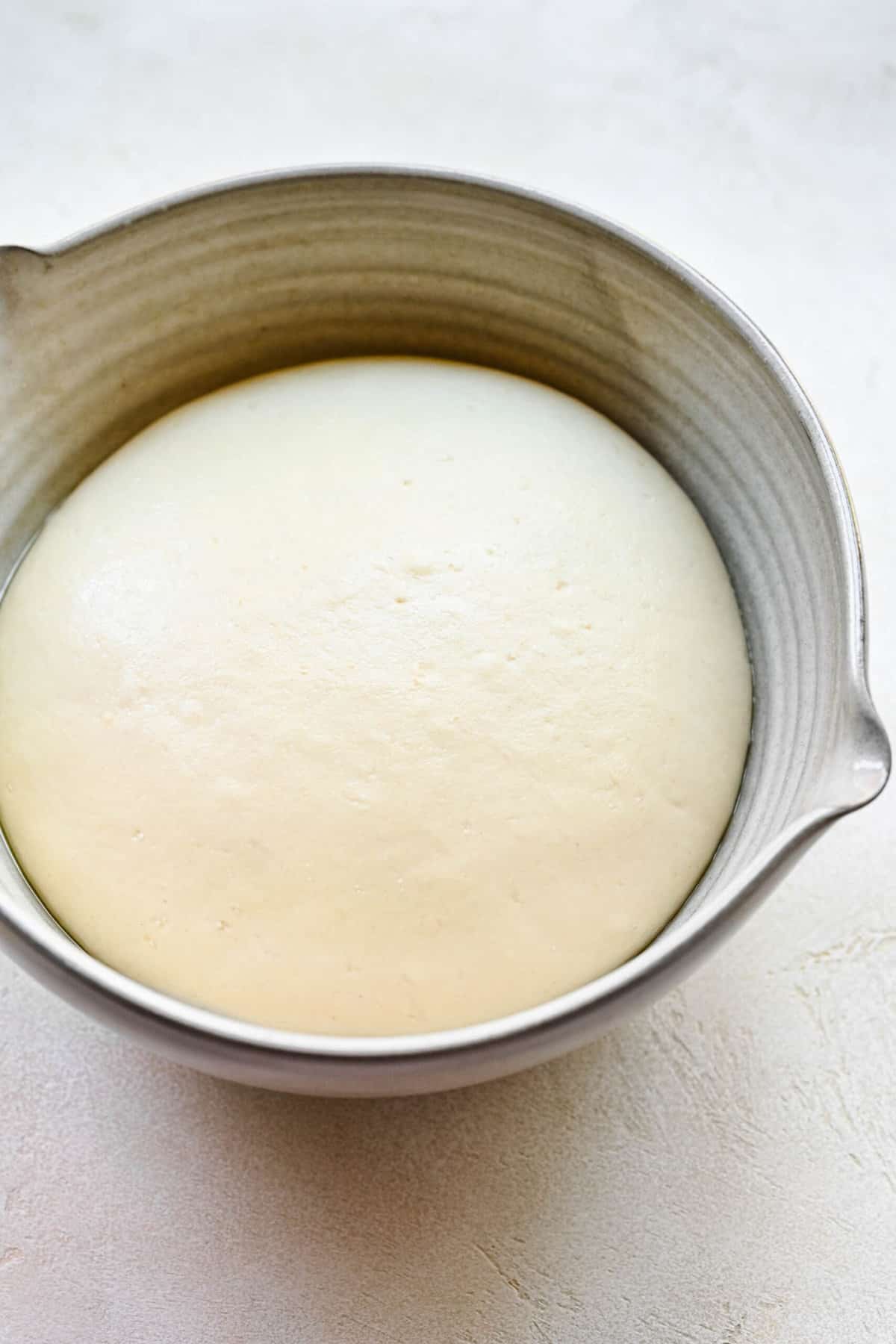
- Rise. Place the dough in a greased mixing bowl. Turn the dough to coat it in oil, cover, and let rise until doubled in size.


- Shape into buns. Knead the dough for a few minutes, roll it out into a large rectangle, and cut it into circles. Fold each circle in half. Press down to seal. Cover and let rest for 30 minutes.
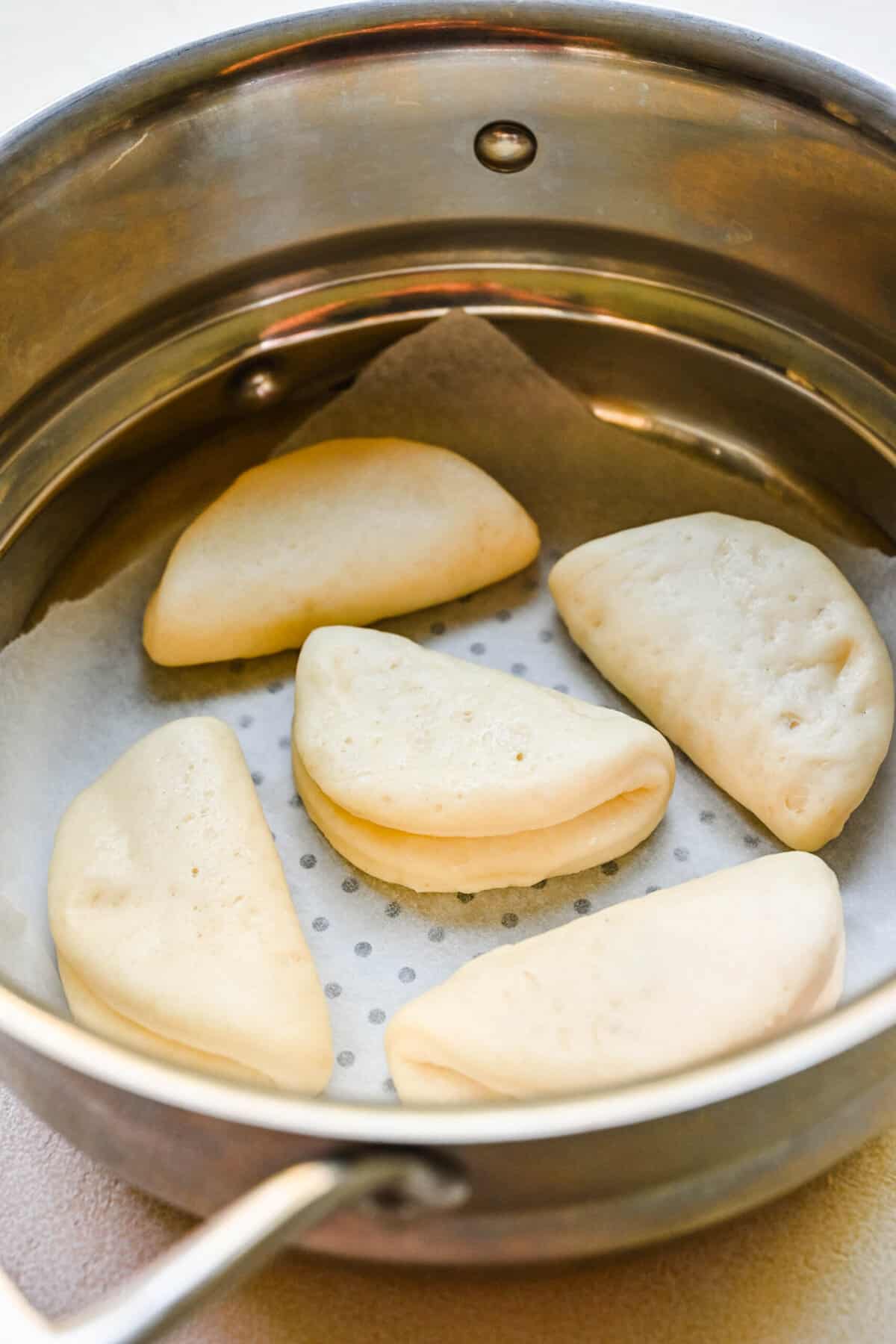
- Steam. Steam the buns for 10-12 minutes over boiling water in a steamer lined with parchment paper. Do this in batches.
Tips for Success
This bao bun recipe is relatively simple but there are a few things to keep in mind if you want to achieve the best outcome. Here they come.
- Try it hands-free. Make things easier on yourself and knead the dough with a dough hook attachment in a mixer. Knead on medium speed for 5-7 minutes.
- Temperature. When it comes to the water and milk used in the dough, it is crucial that both are heated to ~110-115 degrees F. Water that is too cold won’t activate the yeast. Water that is too hot will kill the yeast. In either case, your buns will fall flat. You can use an instant-read thermometer to be extra certain of the temperature of the liquids.
- Be stingy with flour. When kneading the dough, be careful not to add too much flour. The dough should stay a little sticky. Too much flour will end you with tough, dry, dense buns.
- Look for the bounce back. You will know you are done kneading the dough when it is smooth and elastic. What does “elastic” dough look like? Poke the dough with your finger. When it’s ready, it should bounce back at you.
- No mess. To prevent the dough from sticking in the steamer, lightly spray the parchment with water before adding the buns. Although this isn’t something I have found necessary, it is helpful for some.
- Leave space between the steamer and the water. Set the steamer at least a couple of inches above the boiling water. Otherwise, the water will come in contact with the buns, making them soggy.
- Steam in batches. It is important to give the buns ample space in the steamer. They should sit about an inch apart from one another. You will likely have to steam your buns in batches to make this possible.
Ways to Serve Bao Buns
Steamed bao buns are the quintessential Chinese side dish. The extremely mild flavor of the buns themselves makes them the perfect complement to a myriad of flavor-packed dipping sauces, side dishes, and entrees. Here are some ideas for you.
- Dipped in sauce. Keep it simple and enjoy these buns dipped in soy sauce, sweet chili sauce, or hoisin. Want to make your own? Try this Dumpling Sauce Recipe.
- With veggies. Serve them alongside my Smashed Asian Cucumber Salad, this Spicy Chinese Cucumber Salad, my Chinese Cabbage Stir Fry, Cold Garlic and Soy Green Beans, or sautéed bok choy.
- As a slider. Stuff your bao buns with Asian slaw and a bit of fried pork belly or shredded beef or pork in sweet chili sauce.
- As a side dish. I love serving these buns as a side dish to a saucy Chinese main. Have a look at the section below titled “More Chinese Recipes to Try” for inspiration.
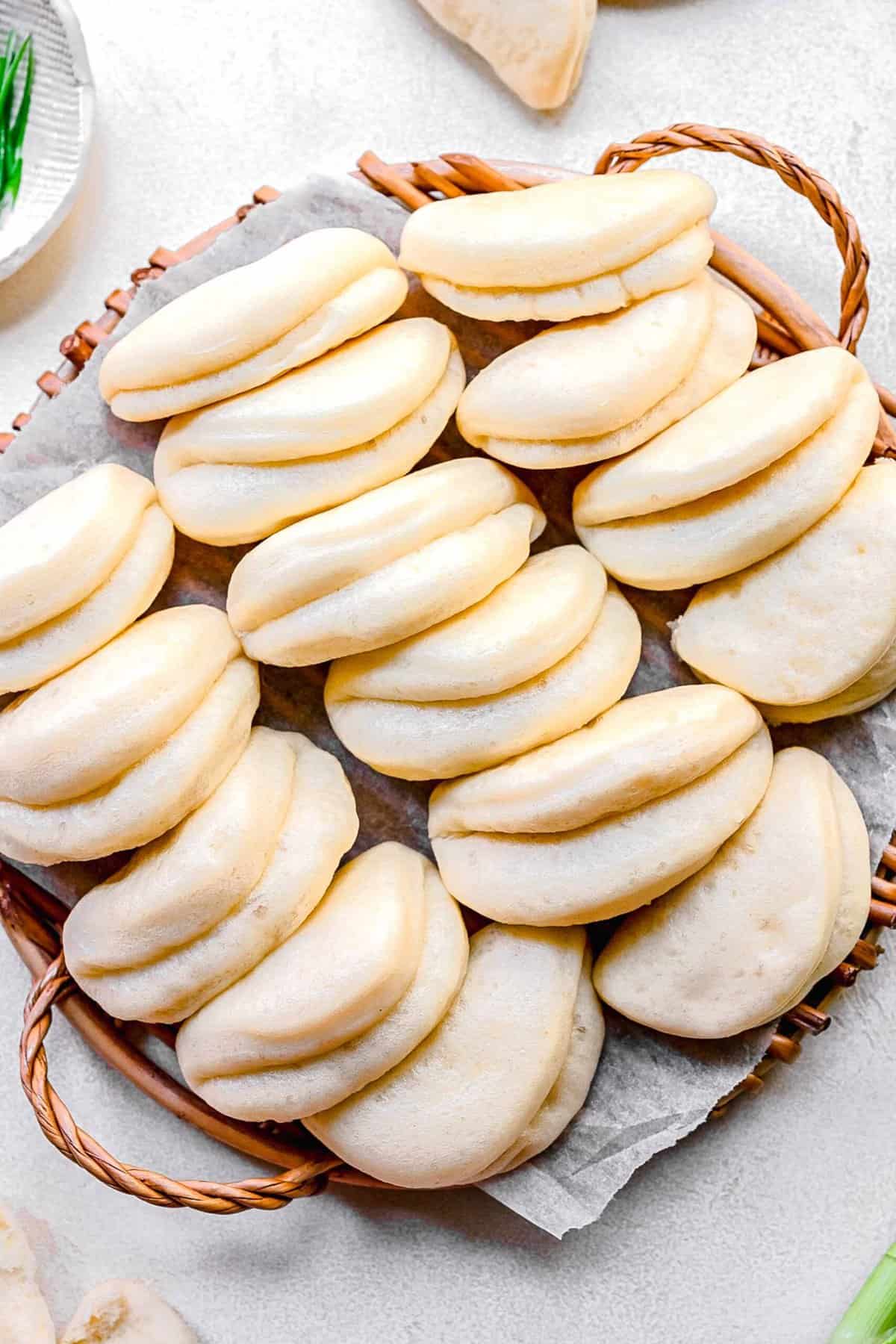
How to Store and Reheat Extras
This bao bun recipe makes around 25 steamed buns. You are almost certain to have leftovers which is great because they keep well and remain tasty for a couple of days. Allow the buns to cool completely before sealing them in an airtight container. Store them in the refrigerator for up to 4 days.
When you are ready to enjoy, arrange the buns in a single layer on a plate. Cover them with a damp paper towel and microwave in 20-second intervals or until heated through.
Can I Freeze Bao Buns?
Bao buns freeze quite nicely. Once they have cooled, arrange the buns in a single layer on a sheet pan lined with parchment paper. Place the sheet pan in the freezer for a couple of hours for the buns to firm up. Seal the frozen buns in a Ziplock. Be sure to get all of the air out of the bag. Freeze for up to 3 months.
Allow the buns to thaw in the refrigerator before adhering to the reheating instructions in the section above titled “How to Store and Reheat Extras”.
More Chinese Recipes to Try
Feeling inspired by these Chinese bao buns? Here are a few other favorite Chinese recipes from my kitchen to yours.
- Black Pepper Chicken (Panda Express Copycat)
- Chinese Sweet and Sour Chicken
- Hunan Beef
- Orange Chicken
- Beijing Beef Panda Express Copycat
- Instant Pot General Tso’s Chicken
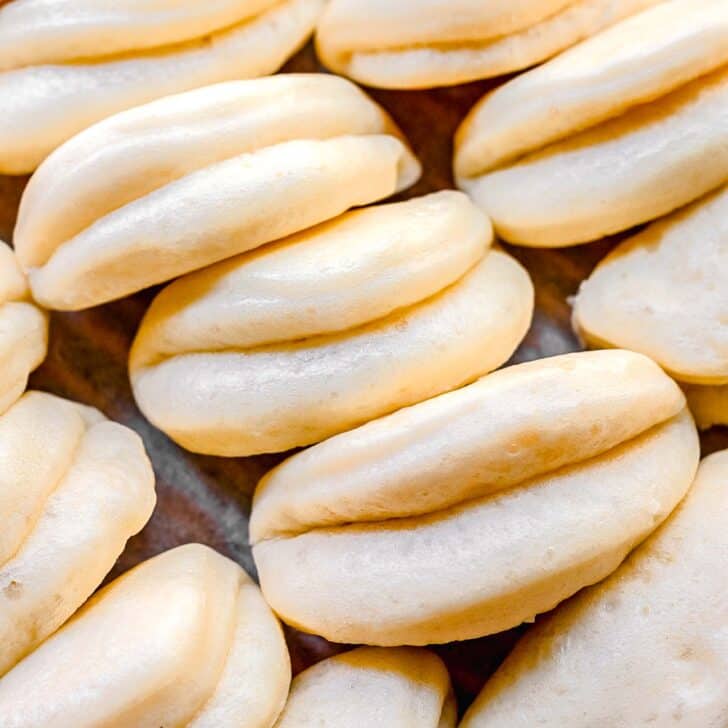
Bao Buns
Equipment
Ingredients
- 3 cups all purpose flour
- 2 tablespoons granulated sugar
- 1 tablespoon active dry yeast
- ½ teaspoon salt
- ½ cup water heated to ~115 °F
- ½ cup whole milk heated to ~115 °F
- 2 tablespoons vegetable oil
Instructions
- Add water and milk to a small saucepan over medium low heat. Heat until they reach a temperature of about 110 °F–115 °F. If hotter, let cool to that temperature, otherwise it will kill the yeast.
- In a large mixing bowl, whisk together flour, sugar, yeast and salt.
- Create a well in the center and add in the warm milk/water mixture and the vegetable oil.
- Stir together until it forms a shaggy dough. Turn out the dough onto a lightly floured surface and knead for 8-10 minutes, until the dough is smooth and elastic. Don’t add too much flour while kneading. It should be slightly sticky.
- Place the dough in a greased mixing bowl, turn to coat the top of the dough in oil, then cover and let rise in a warm place for 90 minutes, or until doubled in size.
- Punch the dough down and knead for a few more minutes, then roll the dough into a large rectangle about ¼” thick. Using a 3 ½” round cookie cutter, cut into circles. Fold each circle in half to create a half moon shape.
- Gently press down to seal.
- Line a steamer with parchment paper or a coffee filter. Cover and let the dough rest for another 30 minutes.
- Meanwhile, get water boiling for the steamer.
- Place a few buns in the steamer (spaced apart, otherwise they will stick together). Place the steamer on top of the pot of boiling water, making sure the bottom of the steamer isn’t touching water. Cover and steam for 10-12 minutes, then carefully remove and repeat with the remaining buns.

